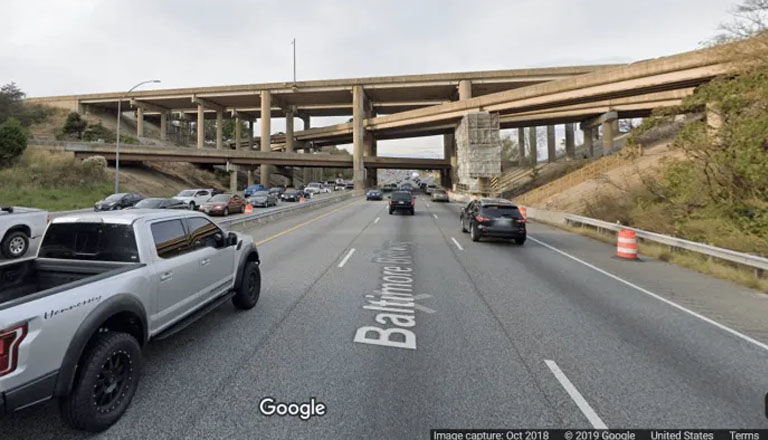This article was republished with permission from WTOP’s news partners at Maryland Matters. Sign up for Maryland Matters’ free email subscription today.
This content was republished with permission from WTOP’s news partners at Maryland Matters. Sign up for Maryland Matters’ free email subscription today.
The Maryland Department of Transportation has won approval to use a data analytics firm to gain greater insight into the commuting patterns of Baltimore-area motorists.

Transportation Secretary Pete K. Rahn said the San Francisco-based firm — which tracks cell phone signals — will give the department a much broader sense of where people begin and end their travels, without compromising the privacy of individual drivers.
The Board of Public Works — made up of the governor, comptroller and treasurer — approved the one-year, $236,137 contract with StreetLight Data on Wednesday. The vote was unanimous.
Rahn said MDOT will focus on the Baltimore Beltway-Interstate 70 interchange near Woodlawn, which he referred to as “the three bridges” because of its stacked flyover ramps.
“It’s really a chokepoint,” he said in an interview, “and it’s an area that has needed improvements for quite some time, so we’re trying to address that.”
On its website, which is geared to industry professionals, StreetLight Data boasts that its “Insight” system can “process trillions of geospatial data points to measure how pedestrians, bikes and vehicles interact.”
“Select any zone or roadway and analyze where trips end or originate,” the site says. “Analyze all routes between two cities, a downtown and a bridge, or between specific intersections. Customize your O-D [origin-destination] locations — office campus, park or shopping mall, an individual store. Select any day of the week and time of day.
“This is next-level O-D. We can support a travel demand model, a corridor study, a turning movement study and more.”
The contract with StreetLight Data was pulled from the Board of Public Works agenda in July because Treasurer Nancy K. Kopp (D) and Comptroller Peter V.R. Franchot (D) had concerns about the system’s privacy.
An exchange of letters between the two officials and State Highway Administrator Greg Slater followed.
“This is not a threat in any way to people’s privacy,” Rahn said. “Absolutely there is no collection of personally-identifiable information. … All [the system] knows is a signal went by. That’s all it’s providing.”
In seeking the approval of the board, State Highway Administration officials said “no other vendor” offered 24-hour-a-day/seven-days-a-week traffic monitoring.
The agency also saw value in “a platform allowing MDOT SHA to pull data already processed by an outside vendor, rather than be the owner of potentially private sensitive information.”
Del. Kumar P. Barve (D-Montgomery), chairman of the House Environment and Transportation Committee, said the legislature will hold a hearing on the StreetLight system next year.
“I’m certainly in favor of knowing what traffic patterns are, so we can have proper traffic planning,” Barve said. “But I think the legislature ought to know the specifics of how this is working.”
“I do want to know exactly what is taking place here,” he added.







